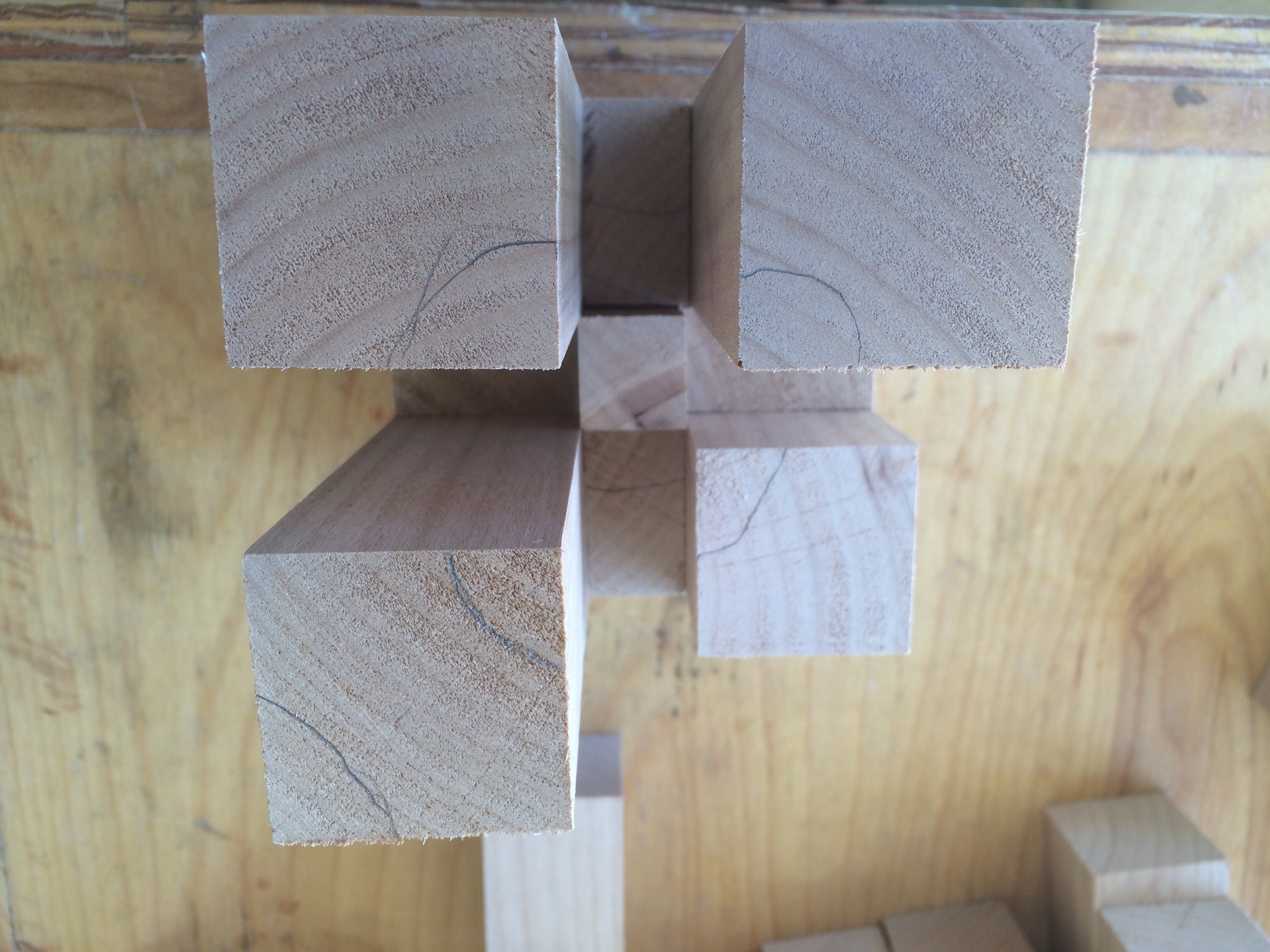I just found how the post is cut. I'm liking this.
Another version of the same concept, though if I used it I wouldn't angle the interior sides of the post. Due to the weight, I'll still have to have a support frame under the bed. And I'm planning on putting drawers in the base. I doubt I can find 8"x8" stock in any wood at the hardwood store so I'd have to do a glue-up for the posts. I like the no metal hardware and the absence of the need for tools to assemble and disassemble.







 Reply With Quote
Reply With Quote



 , I'm leaning toward alder, if I can find the dimensions I need. If not, then I'll probably use rift sawn RO. I at least want to buy the wood before we move, because SE Florida seems to be a hardwood desert.
, I'm leaning toward alder, if I can find the dimensions I need. If not, then I'll probably use rift sawn RO. I at least want to buy the wood before we move, because SE Florida seems to be a hardwood desert.
